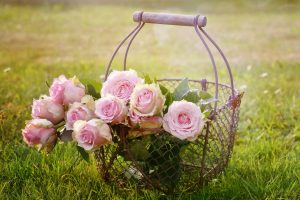No doubt you’ve seen the television commercial promoting Hydro Mousse, a combination of seed and mulch that is used to repair bare spots on lawns. In the commercial the mousse is sprayed onto a wall and over time the seeds grow into a healthy blanket of grass.
Whether you have seen the commercial or not, perhaps you have considered growing grass or plants on a wall because of the way it might lend something different to the landscape of your property.
Actually, scientists have discovered that green walls can help reduce large amounts of air pollutants in cities. The walls absorb carbon dioxide, carbon monoxide, and other toxins from the air during photosynthesis.

(courtesy of https://www.great-parks.com/building-and-equipment-for-aquatic-parks/products/green-wall/)
Green walls also help to:
- Reduce noise.
- Suppress dust improving air quality around construction sites and busy highways.
- Reduce heat because it offers canopy cooling of trapped air.
- Limits reflected heat.
- Reduces energy costs by cooling the air through a process known as “evapotranspiration” in the summer months and offers building insulation during the winter months.
- Encourages biodiversity that increases the number and variety of insects and birds to help create a more sustainable ecosystem in urban areas.
- Provide better storm water management and limiting flash flooding.
- Assist in reducing ultraviolet (UV) damage to walls and protects buildings from wind, weather, and temperature fluctuations.
- Remove volatile organic chemicals and other harmful toxins including benzene and formaldehyde from interior air space.
How To Grow A Green Wall
Of course, before selecting plants and installing your green wall there are some preliminary considerations.
You will want to select a wall on which to grow the plants. In creating a green wall it is important to consider a few things:
· The position of the wall
· The water management system
· The durability of the wall
· The wall’s resistance to water
It is advised that you select a wall that offers adequate sunlight. In addition, make certain that the wall is strong enough to accommodate the weight of the soil, plants, and irrigation system. You may discover that you need reinforcements for the wall that can include timber or steel. In addition, to ensure that the surface of the wall is protected from water, cover it with a waterproof paint.
Next, you will want to select the plants. The actual selection of the plants will depend on the position of the wall. It is advised that you choose plants that can withstand strong winds and has a shallow root system.
Once you have a location and the plants, you need to consider the type of water management system you will use. A great thing about having a garden on a wall is that you can take advantage of the wastewater that would otherwise flow down to the ground. The water management system is designed to collect and then pump the water into the irrigation system making it sustainable.
There are three types of water management systems you can use on your green wall. They include:
· Gravity drip irrigation. This involves a conventional drip system that maximizes the water by irrigating the top tier of plants on the wall.
· Pipe networks. A network of pipes carries the water throughout the wall at specific periods that are controlled by a timer.
· Green walls with in-built watering networks. This type of irrigation system includes installed units within the framework.
Install the plants so that they grow up a trellis or wire. This is an inexpensive option. However, it will take time for the plants to establish.
An alternative to trellises and wires is to utilize a grid planter system that uses a frame, cells, and irrigation channels that are separated from the building with an air gap. If soil is used as a potting medium, then the cells are about 2-4-inches deep.

(Courtesy of https://www.ambius.com/blog/ultimate-guide-to-living-green-walls/)
Save
Save
Save
Save
Save
Save






